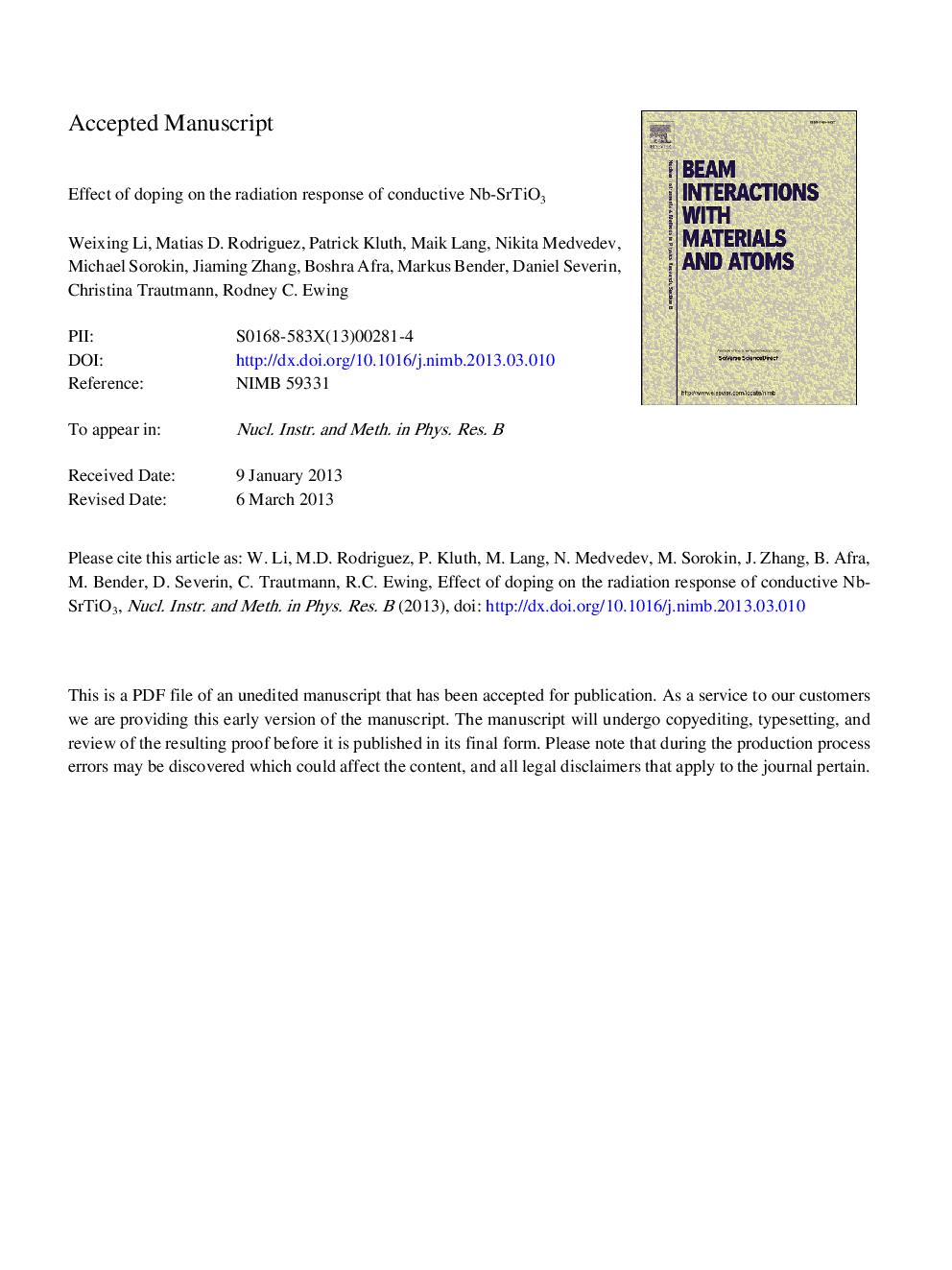| Article ID | Journal | Published Year | Pages | File Type |
|---|---|---|---|---|
| 1681518 | Nuclear Instruments and Methods in Physics Research Section B: Beam Interactions with Materials and Atoms | 2013 | 32 Pages |
Abstract
Based on the Coulomb spike model, track formation depends strongly on the electrical resistivity of a material, and ion tracks form only in insulating materials. However, there are no systemic studies of the effect of resistivity on the track formation in materials, such as SrTiO3 (STO), where with the addition of low concentrations of Nb, the resistivity dramatically decreases covering the entire electronic regime from an insulating to conducting material. In this study, high energy (8.6Â MeV/u) ion-induced track formation in STO was characterized by transmission electron microscopy (TEM) and small-angle X-ray scattering (SAXS) techniques as a function of Nb-doping concentrations. Contrary to the Coulomb spike model's predictions, the Nb-doping had no evident influence on track formation, as confirmed by both TEM and SAXS. This may be the result of the low electron density in the bulk material or the minor effect of the Nb-doping on the bonding in the material. In situ TEM studies of low energy (1Â MeV Kr2+) ion irradiations show that the low concentration doping has a minor influence on the crystalline-to-amorphous transformation as a result of subtle structural variations of incorporated impurity atoms.
Related Topics
Physical Sciences and Engineering
Materials Science
Surfaces, Coatings and Films
Authors
Weixing Li, Matias D. Rodriguez, Patrick Kluth, Maik Lang, Nikita Medvedev, Michael Sorokin, Jiaming Zhang, Boshra Afra, Markus Bender, Daniel Severin, Christina Trautmann, Rodney C. Ewing,
